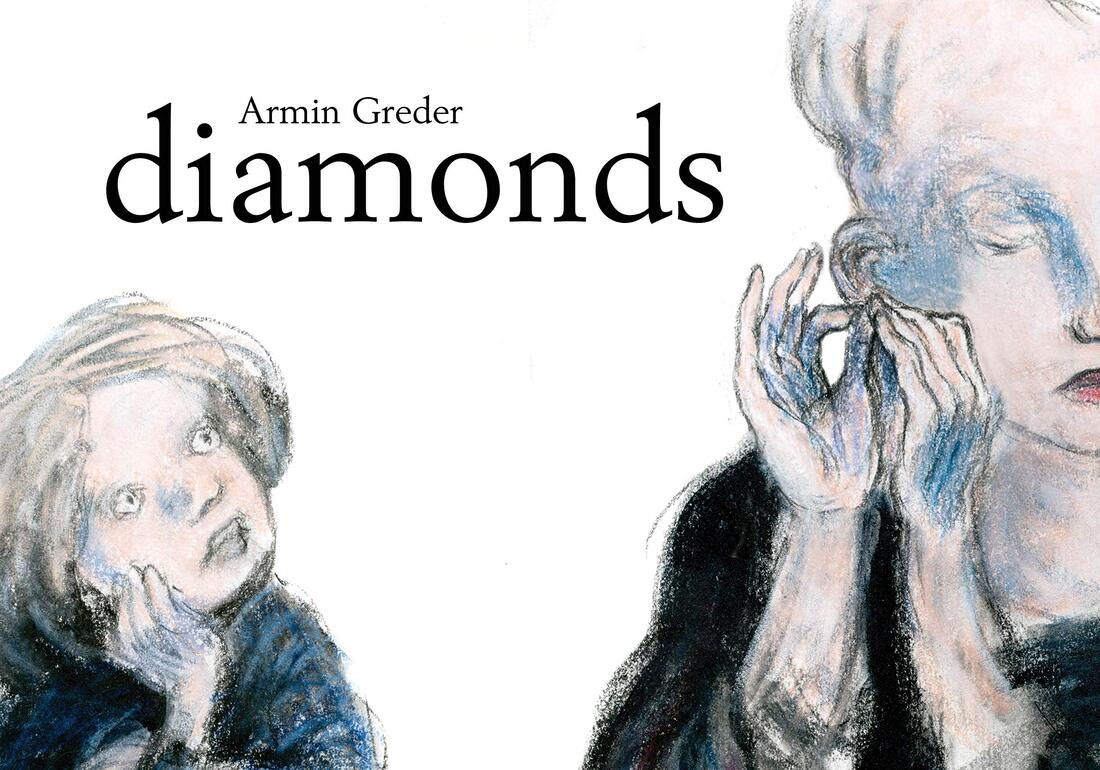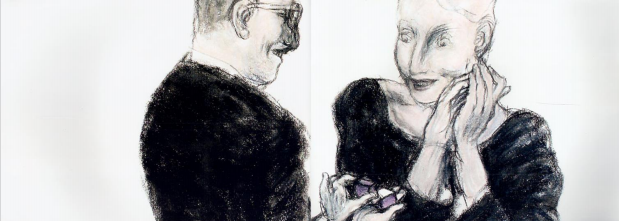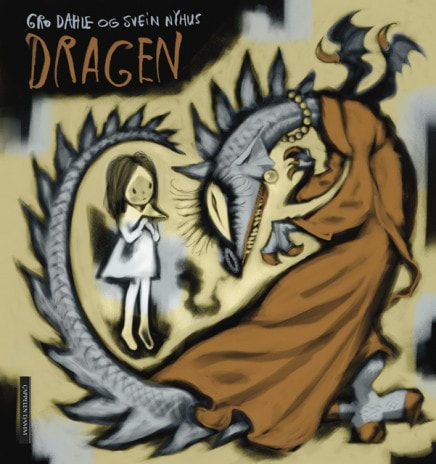By: William Bintz & Meghan ValerioPicture books are for everybody at any age, not books to be left behind as we grow older. (Anthony Browne, 2019)
This intriguing diamond industry story depicts the controversial journey of diamonds from source to customer, including the appalling conditions, black market, and blind ignorance of customers rich enough to purchase them. It is a disturbing and evocative depiction of how the diamond industry, historically and contemporaneously, feeds an insatiable appetite for diamonds, and in the process, also perpetuates inequality, conflict, and corruption. Metaphorically, this visually unsettling book removes the sparkle from diamonds. Diamonds (Greder, 2020) is not a novel, short story, nor poem. It is a picturebook, with approximately 32 pages, minimal text (195 words), and single and double-spread illustrations. It is not, however, a traditional picturebook – it is a crossover picturebook (see Table 1 for more examples).
Benefits of Crossover PicturebooksCrossover picturebooks invite teachers to shift perspectives and think differently about the nature of childhood and the purpose of curriculum. In terms of childhood, crossover picturebooks posit that teachers Never Read Down, Always Read Up to children. Reading down sees the child as innocent and in need of protection; reading up sees the child as capable of understanding sophisticated topics (Dressang & Kotrla, 2009). Reading down suggests that limiting or eliminating access to controversial issues protects the innocence of children; reading up conceives the danger of withholding information from youth as exceeding the danger of providing it (Dressang, 1999). Curriculum utilizing crossover picturebooks is rooted in an inquiry-based model. This model builds on curiosity and supports inquiry for teachers and students. Within this model, instruction based on crossover picturebooks:
A Concluding, But Not Final, ThoughtPicturebooks are synonymous with children’s literature. But is this a necessary condition of the art form itself? Or is it just a cultural convention, more to do with existing expectations, marketing prejudices and literary discourse? There is no reason why a 32-page illustrated story can’t have equal appeal for teenagers or adults as they do for children (Tan, 2003, np). We end with a concluding, not a final, thought, because we hope this post will start new conversations, not close them down. This thought is eloquently expressed by internationally renowned author and illustrator, Shaun Tan. Yes, picturebooks have been, and continue to be, synonymous with children’s literature. Is it time to shift perspective and think differently about this kind of literature? If so, we believe crossover picturebooks are a good conversation starter for readers of all ages. References
Meghan Valerio is a doctoral student in Curriculum and Instruction with a Literacy emphasis at Kent State University. Meghan’s research interests include investigating literacy and cognitive development from a critical literacy perspective, centering curricula to understand reading as a transactional process, and exploring pre- and in-service teacher perspectives in order to enhance literacy instructional practices and experiences. William Bintz is Professor of Literacy Education in the School of Teaching, Learning, and Curriculum Studies at Kent State University. His professional interests include the picturebook as object of study, literature across the curriculum K-12, and collaborative qualitative literacy research. BY MEGHAN VALERIO & WILLIAM BINTZRecently, I (William) introduced crossover picturebooks in a graduate literacy course to students pursuing a reading specialization Master’s degree. All students were practicing teachers ranging from elementary through high school. Each week, I read aloud a crossover picturebook to introduce the class session. Selected picturebooks dealt with themes including death and dying, divorce, suicide, mental illness, physical disability, parent-child separation, and other life-changing and impactful events. One example is Dragon by Gro Dahle (2018). It tells the story of Lilli, a young girl who is a child abuse victim by her mother. Lilli regards her mother as a dragon because she is explosive, hot-tempered, and abusive. After reading, I invited students to share their questions and reactions to crossover picturebooks. Three questions and one reaction were particularly illustrative:
These responses inspired this blog post. They revealed teachers may not know much about crossover literature but are curious to know more about it. What are Crossover Picturebooks?Crossover literature, or texts written for dual-aged audiences, is not a new genre, as many books could be considered crossover already. While picturebooks specifically might be enjoyed by both children and adults, crossover picturebooks, a subset of crossover literature, are written and illustrated intentionally for both children and adults, breaking conventional assumptions that books are intended for one age group (Falconer, 2008; Harju, 2009, Rosen, 1997). Crossover authors communicate purposeful messages to both audiences equally (Harju, 2009). Narratives then are considered ageless and timeless, often portraying issues that might be deemed controversial including death, verbal and physical abuse, and divorce. In a world where in-person and online book shopping and borrowing is organized by genre and age, this makes these “ageless” books complex. Consider first an adult purchasing a picturebook for themselves, and on the flip side, encouraging a child to purchase a book about abuse. Both instances could be questionable, even alarming to some. While there are truly designated texts for children, like aesthetic and sensory appealing babybooks (Kümmerling-Meibauer, 2015), crossover picturebooks defy traditional book categorizing norms, causing anyone interested to rethink what counts as children’s literature vs. adult. Children’s literature though is written and published by adults for children (Rosen, 1997). So really, is there such a thing as a true children’s book if the text isn’t written by children at all? What Concerns Does This Raise?Currently, we are conducting research on crossover picturebooks. Specifically, we are exploring teacher concerns on using this literature in the classroom. Based on this research, two major findings indicate that many K-12 teachers worry about the following issues:
These concerns, and many others like them, are real for teachers. Traditionally, children’s literature is to be enjoyable not uncomfortable, entertaining not controversial. Crossover literature invites a different perspective and pushes the envelope on censorship and what constitutes taboo topics in classrooms. To help explore this further, we recommend the following resources. These resources include picturebooks and professional literature that have pushed our thinking about crossover literature. We hope they will push yours.
ReferencesBishop, R.S. (1990). Mirrors, windows, and sliding glass doors. Perspectives: Choosing and Using Books for the Classroom, 6 (3). Falconer, R. (2008). The Crossover Novel: Contemporary Children’s Fiction and Its Adult Readership. London, UK: Routledge. Harju, M.L. (2009). Tove Jansson and the crossover continuum. The Lion and the Unicorn, 33(3), 362-375. Kümmerling-Meibauer, B. (2015). From baby books to picturebooks for adults: European picturebooks to the new millennium. Word & Image, 31 (3), 249-264. Rosen, J. (1997). Breaking the age barrier. Publishers Weekly. 243 (6). Meghan Valerio is a doctoral student in Curriculum and Instruction with a Literacy emphasis at Kent State University. Meghan’s research interests include investigating literacy and cognitive development from a critical literacy perspective, centering curricula to understand reading as a transactional process, and exploring pre- and in-service teacher perspectives in order to enhance literacy instructional practices and experiences. William Bintz is Professor of Literacy Education in the School of Teaching, Learning, and Curriculum Studies at Kent State University. His professional interests include the picturebook as object of study, literature across the curriculum K-12, and collaborative qualitative literacy research. BY GRACE ENRIQUEZ & DENISE DÁVILA
In the emergency shift to remote learning, educators and parents sought and found a plethora of video read-alouds and digital libraries of children’s books. This heartened us, as these resources offered access to reading material that many children wouldn’t be able to obtain otherwise.
Now that the school year is winding down, and the initial rush to cobble together online books has abated, we take a moment to reflect on the range of online books and resources available for children. Specifically, as educators committed to social justice, we wondered where we could turn to (a) continue sharing children’s literature with our students to support our goals of diversity, inclusion, and equity, and (b) learn more about recently published youth literature created by and for members of minoritized groups. It wasn’t surprising that what is currently available online reflects the massive gap in books about, for, and by diverse communities and underscores the greater need for more diverse books for children overall. In an attempt to close that gap and promote understanding about why diverse books matter--especially now during this global pandemic and in light of the systemic racism, police brutality, and health disparities that our country is currently facing--we have curated a list of online professional guides, blogs, conversations, and other resources. WEBSITES, BLOGS, & PODCASTS - IN ALPHABETICAL ORDER
Grace Enriquez is a Professor of Language and Literacy at Lesley University and a past recipient of the CLA Research Award.
Denise Dávila is an Assistant Professor of Language and Literacy Studies at the University of Texas, Austin and a CLA member.
Image by Gerd Altmann from Pixabay
|
Authors:
|
CLA
About CLA
|
Journal of Children's Literature
Write for JCL
|
ResourcesCLA-sponsored NCTE Position Statements
|
Members-Only Content
CLA Video Library
|
© COPYRIGHT 2018.
ALL RIGHTS RESERVED |




 RSS Feed
RSS Feed